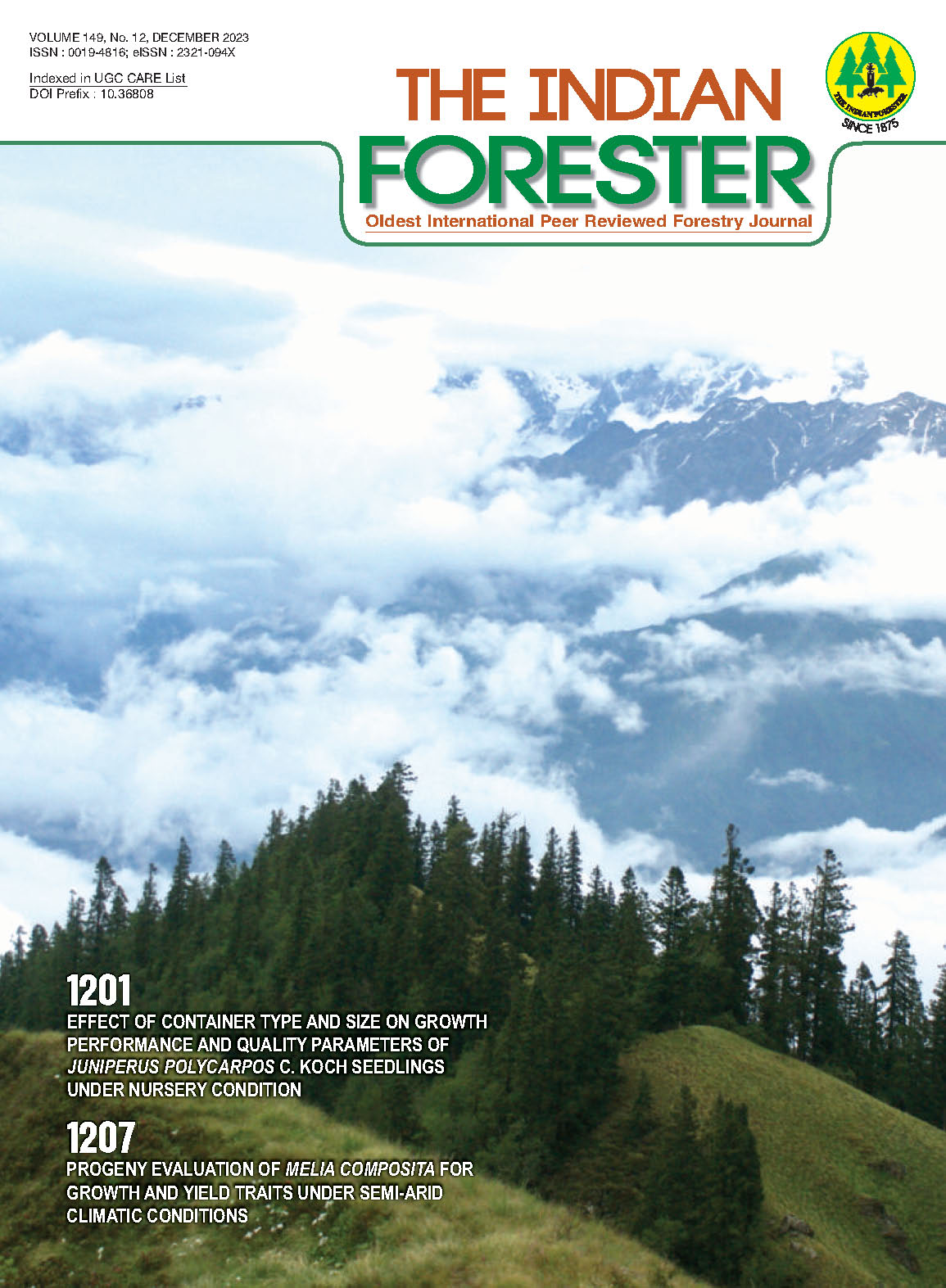Wild Edible Plants and their Consumption Pattern of Dharampur and Kaprada Taluka in South Gujarat
DOI:
https://doi.org/10.36808/if/2023/v149i12/169008Keywords:
Dharampur, Kaprada, Tribal People, Wild Edible Plants.Abstract
The ethnobotanical survey has been carried out to collect information about wild edible plants in Dharampur and Kaprada taluka of the Valsad district in Gujarat. Also, the study narrates different patterns to use the parts of plants. The field survey was conducted using a semi-structured questionnaire and personal interviews with the local informants. During the survey, 42 genera were recorded from 32 families. The analysis about the intensity of use of the different parts of plants has been formatted.References
Gohil T.G. and Thakor A.B. (2008). Ethnobotanical uses of plants by tribals of Kaprada taluka in Valsad District of Gujarat, INDIA. International Journal of Plant Sciences, 3(2): 650-653.
Inamdar J.A. (1966). A preliminary survey of the flora of Dharampur forests in Gujarat. Bulletin of Botanical Survey, India, 10: 126-132.
Kumar R. and Saikia P. (2020). Wild edible plants of Jharkhand and their utilitarian perspectives. Indian Journal of Traditional Knowledge, 19(2): 237-250
Kumar Vikas (2015). Ethno-medicinal plants in five forest ranges in Dang district, south Gujarat, India. Indian Journal of Tropical Biodiversity, 23(2): 148 – 156.
Kumar Vikas and Bimal S.D. (2014). Indigenous Knowledge of Wild Plant Species of South Gujarat. In book: Ethnobotanical studies in India: Sanjeev Kumar, Deep Publication, New Delhi.
Kumar A., Kumar S., Komal Ramchiary N. and Singh P. (2021). Role of Traditional Ethnobotanical Knowledge and Indigenous Communities in Achieving Sustainable Development Goals. Sustainability. 13(6):3062.
Patel Dharmesh C. and Jat B.L. (2018). An Ethnobotanical Survey of Medicinal Plants Used by Traditional Healers of Kaprada Forest (Valsad District), Gujarat, India. Internatioal Journal of Current Microbiology and Applied Sciences, 7(7): 2034-2043.
Rao V.H., Gohil T.G. and Thakor A.B (2012). Study of Ethnobotanical Plants of Kaprada Taluka and Their Significance to the Tribes. An International Research Journal, Life sciences Leaflet, 11: 73-85.
Rao V.H., Gohil T.G. and Thakor A.B. (2013). Floristic study of Kaprada forest in south Gujarat. International Journal of plant science, 8(1): 100-102.
Rastogi A. (1999). Methods in Applied Ethnobotany Lesson from the Field. Kathmandu: International Centre for Integrated Mountain Development, Kathmandu.
Reddy A.S. (1987). Flora of Dharampur Forest, Ph.D. Thesis, S.P. University, Vallabh Vidyanagar, Gujarat, India.
Shah G.L. (1978). Flora of Gujarat State. Sardar Patel University Press, Vallabh Vidyanagar, Part.1, pp. 525-556.
Downloads
Downloads
Published
How to Cite
Issue
Section
License
Unless otherwise stated, copyright or similar rights in all materials presented on the site, including graphical images, are owned by Indian Forester.





